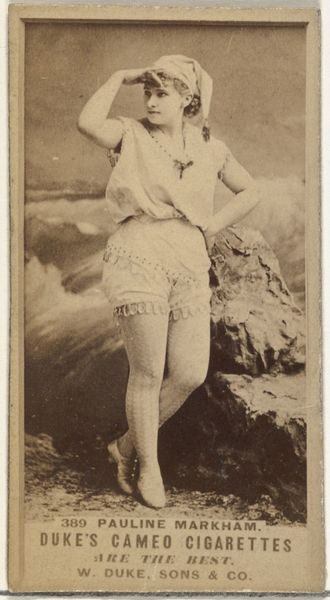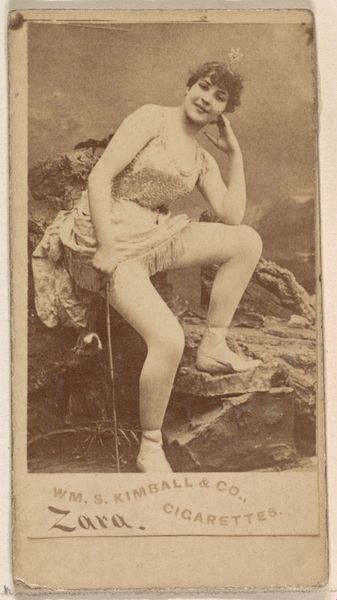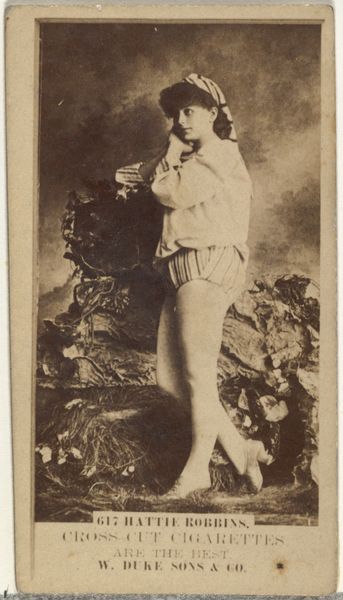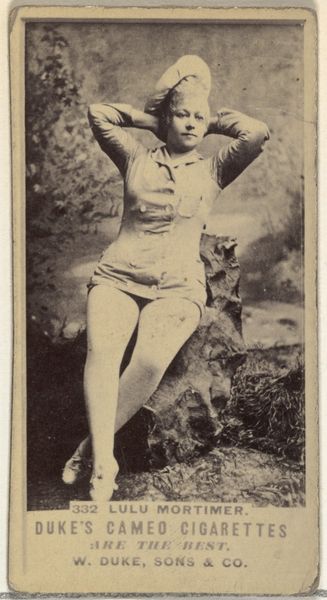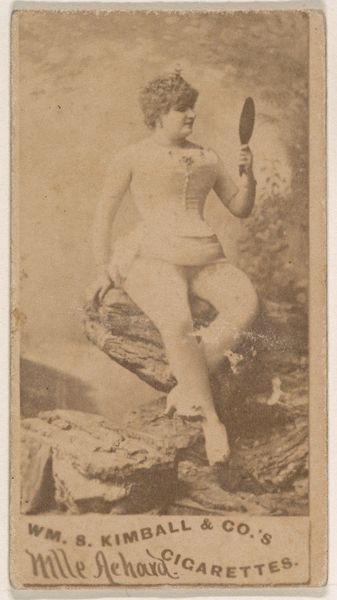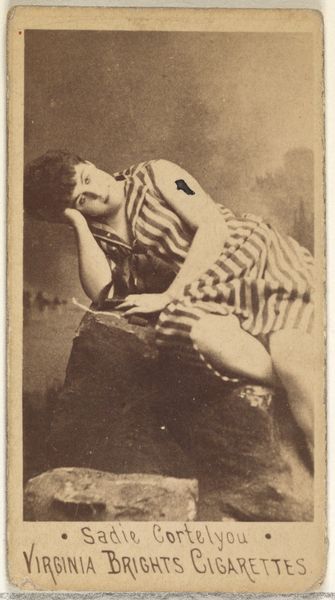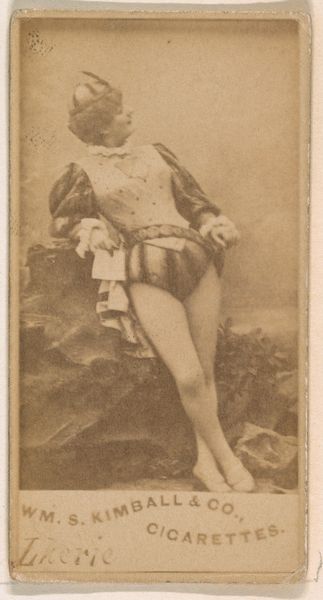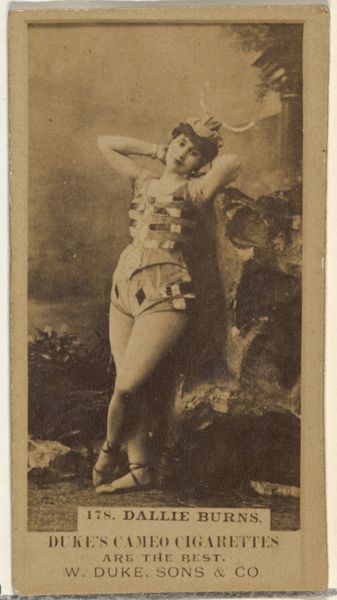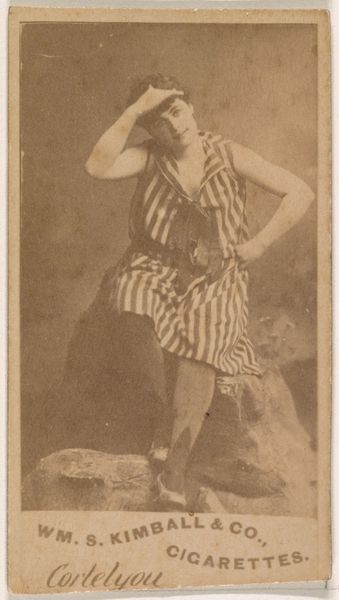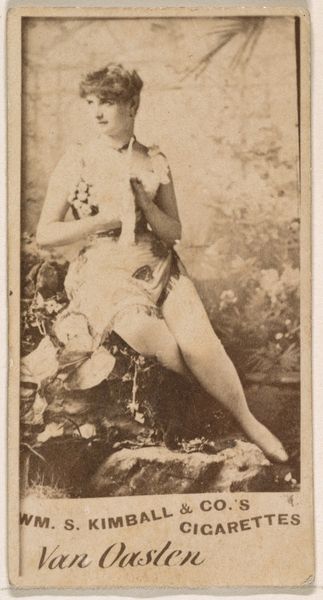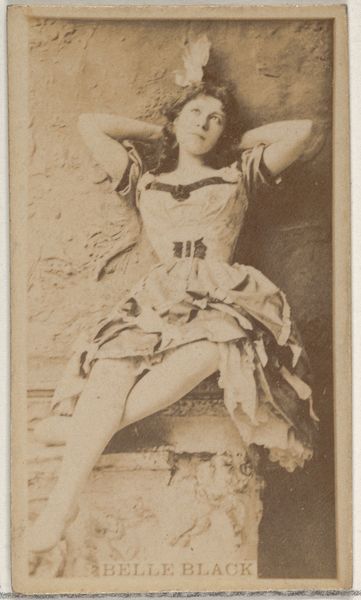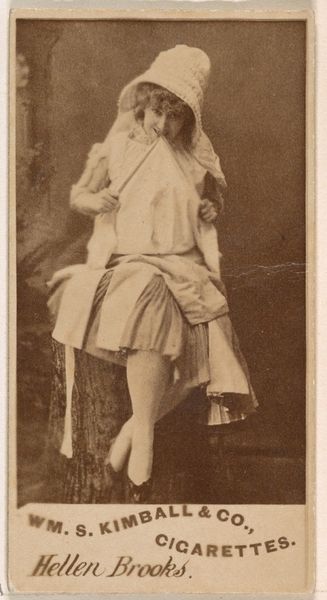
Miss Cartelgen, from the Actresses series (N203) issued by Wm. S. Kimball & Co. 1889
0:00
0:00
drawing, print, photography
#
portrait
#
drawing
# print
#
photography
#
19th century
#
erotic-art
Dimensions: Sheet: 2 5/8 × 1 3/8 in. (6.6 × 3.5 cm)
Copyright: Public Domain
Curator: This is "Miss Cartelgen, from the Actresses series (N203)" by William S. Kimball & Co., dating to 1889. The piece employs photography and print, showcasing a woman in a striped dress reclining on what appears to be a rock. Editor: There's a languid, almost dreamlike quality to it. The soft focus and sepia tones definitely contribute to that feeling of a bygone era, but I also detect something very calculated. Curator: Precisely. These images, part of a series found on cigarette cards, were tools for marketing. Actresses, being public figures, were ideal subjects for promoting products, leveraging their popularity to influence consumer behavior. The series itself illuminates the commercialization of image and fame. Editor: Yes, there's an erotic subtext that needs acknowledgement too. Think about how the reclining pose might resonate, specifically when viewed in the context of a developing commercial culture that sexualized female figures for advertising. Is it celebrating the female form, or merely reducing the woman to an object for consumption, parallel with the cigarettes being sold? Curator: Good point. These cards circulated widely, blurring the lines between art, advertising, and everyday life. What were the ethical implications of this marketing approach, given the addictive nature of the product being sold and the demographic targeted by its advertisers? Editor: What's especially fascinating is how "innocent" the photo initially seems. But beneath the surface is a complex tapestry of cultural assumptions about femininity and worth during that period. To what extent were actresses empowered by their fame, or merely exploited as commodities for sale? Curator: These are questions to sit with, as we consider our own era, where these types of marketing tactics continue. It underscores that how an image circulates is as critical as the image itself, demanding that we interrogate power relations inherent within visual culture. Editor: Absolutely. It highlights how looking critically at these seemingly straightforward representations unearths really compelling socio-political considerations. Hopefully, viewers will ask more probing questions concerning both their historical meaning and the ongoing relevance of similar image-making today.
Comments
No comments
Be the first to comment and join the conversation on the ultimate creative platform.
